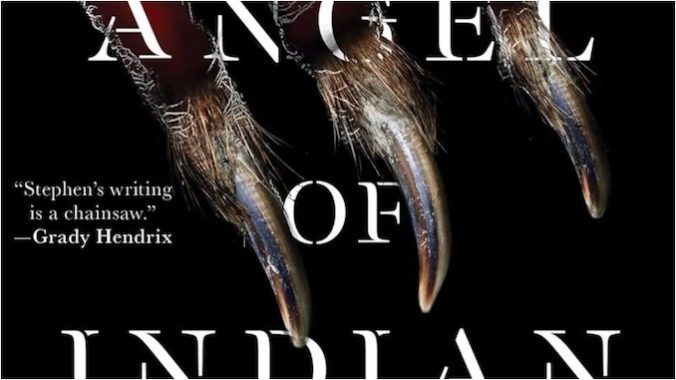The Angel of Indian Lake: An Overstuffed and Utterly Unstoppable Final Chapter In Stephen Graham Jones’s Epic Horror Trilogy

Trilogies come with their own specific sets of pressures, and horror trilogies are perhaps more stressful than most. After all, as everyone who’s seen Scream already knows, there are rules to these things, and likely more than usual when you’re talking about bringing something like Stephen Graham Jones’s bestselling Indian Lake trilogy to an end. Previous installments My Heart Is a Chainsaw and Don’t Fear the Reaper were huge critical and commercial hits, recontextualizing the literary horror genre for a new audience and packing tons of carnage in alongside a thoughtful exploration of trauma and loss. Now, with The Angel of Indian Lake, Jones attempts to bring his sprawling, bloody story to a satisfactory end—and mostly succeeds. And although there are moments where his large narrative sags a bit under the weight of its own self-referential hubris, its central character is more than strong enough to drag its proverbial body over the finish line.
A love letter to the slasher genre that’s one part history lesson and one part rumination on class in America, all tapped off with a determinedly feminist reexamination of the concept of the Final Girl, Jones’s trilogy has a lot more than jump scares and stabbings to recommend it. This is complex horror done right, a story that’s as much about the monsters in our heads as the ones lurking in the woods with a hockey mask. (Though, to be fair, both kinds play significant roles in this story.) The Angel of Indian Lake takes everything readers loved about the first two books in the trilogy and cranks it all up to eleven, cramming its 400+ pages with even more callbacks, red herrings, pop culture references, and creatively minded killings than ever before.
The story begins eight years after the events of My Heart is a Chainsaw, when then 17-year-old slasher movie enthusiast Jade Daniels survived the gruesome carnage that her hometown of Proofrock, Idaho now refers to as the Independence Day Massacre. Older and presumably somewhat wiser, Jade’s got it together now—mostly. She’s in therapy, she’s got meds, and a fairly stable life plan—thanks to what appears to be the near-constant intercession of her pushy BFF and fellow Proofrock survivor Letha Mondragon-Thompkins. In a sort of backhanded compliment to the instructor whose extra credit assignments she used to complete with slasher essays, she’s now the history teacher in the same school she once attended. And she’s working on finding healthier ways to navigate her lingering trauma and PTSD (or at least ones that aren’t horror movie-based).
-

-

-

-

-

-

-

-

-

-

-

-

-

-

-

-

-

-

-

-

-

-

-

-

-

-

-

-

-

-

-

-

-

-

-

-

-

-

-

-








































